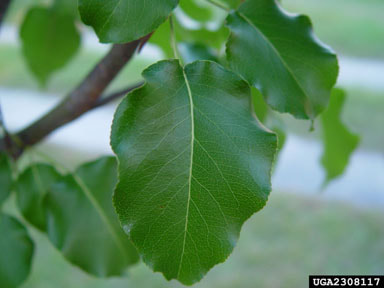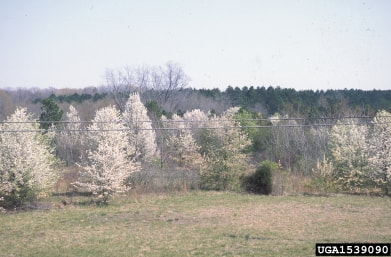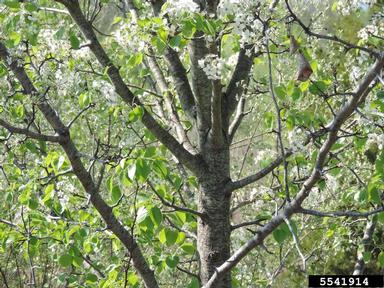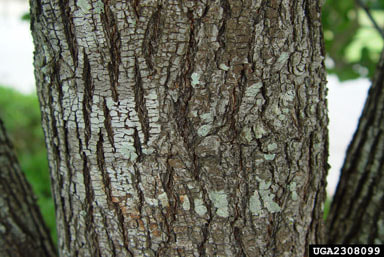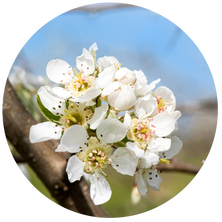|
Callery/Bradford/Cleveland Pear
Pyrus calleryana The callery pear is a medium-sized tree that can grow up to 40 feet tall. It tends to grow in more of a cone or pyramid shape which can be 30 feet across at maturity. It is one of the earliest trees to bloom in the spring and has distinct, white flowers which many people find to smell unappealing.
This invasive species was first introduced to North America in the mid-twentieth century as a landscape tree. From that point, many different varieties were developed. It is still a very popular addition to landscapes today and can commonly be found in garden centers and is installed by landscapers. Despite its popularity, it is very sensitive to wind and ice and can split/break in storms. Callery pear trees can self seed and rapidly grow into dense thickets, crowding out other species trying to compete for the same resources. Many pear trees that have escaped cultivation often develop thorns as well, making them more difficult to manage. Photo credits: Chuck Bargeron, University of Georgia, bugwood.org | Richard Gardner, bugwood.org | James H. Miller, USDA Forest Service, bugwood.org
Learn More About Callery Pear:
|
Callery Pear Facts
Management Options
|
|
Created by the Northwest Michigan Invasive Species Network
|
Go Beyond Beauty is funded by the Michigan Invasive Species Grant Program (MISGP)
|

